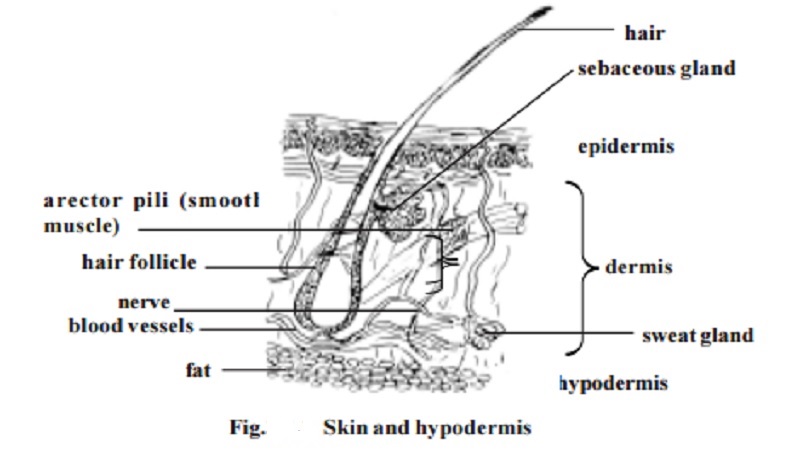Chapter: BIOLOGY (ZOOLOGY) Standard XI first year 11th text book Assignment topics question and answer Explanation Definition
The Integumentary System - Skin and hypodermis

The Integumentary System
The word integument means covering. The integumentary system cov-ers the outside of the body. It protects internal structures, prevents the entry of infectious agents, reduces water loss, regulates body temperature, produces vitamin D and detects stimuli such as touch, pain and temperature. Since the integument performs several functions, it is commonly referred to as Jack of all trades.
The skin or integument rests on layers of cells called hypodermis. The hypodermis attaches the skin to underlying bones and muscles. It supplies blood vessels and nerves to the skin.
The skin is composed of two major tissues, namely dermis and epidermis. The dermis is mostly formed of connective tissue having fibro-blasts, adipose cells and macrophages. It provides the structural strength to the skin. The dermis accommodates nerve endings, hair follicles, smooth muscles and glands.
It is divided into two layers, namely the superficial papillary layer and deeper reticular layer. The papillary layer has projections called papil-lae. The reticular layer is the major layer of the dermis. It is dense in nature. It is continuous with the hypodermis.
Epidermis :- The epidermis is made up of stratified squamous epithelium. It is separated from the dermis by a basement membrane. It contains mel- anocytes giving colour to the skin. Many of the cells of the epidermis produce a protein substance called keratin. Hence they are called as keratinocytes.
The deepest layers of the epidermis produce nerve cells by mitosis. As new cells are formed, the older cells are pushed to the surface. The sur-face cells will protect the inner new cells. Gradually the shape and chemical nature of the surface cells will get altered. Slowly they get filled with keratin. This process is called keratinization. ring this process the epidermis gets divided into five distinct regions or strata. They are the stratum basale, stra-tum spinosum, stratum granulosum, stratum lucidum and stratum corneum.
Related Topics